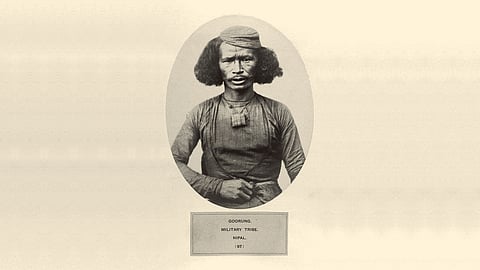People of a Southasian past
It is 1863, barely a decade after albumen photography had been invented in Europe. In Kathmandu, capital of a country far removed from the technological advances of the West and the colonies, a young man stares intently into the lens of an alien box-like instrument. He is a Gurung, whose community has origins in central Nepal, and is probably part of the national army of the day. We know much more about the photographer, Clarence Comyn Taylor (1830-1879), a colonial administrator wounded in the siege of Lucknow in 1857. Taylor perfected his photography skills in Rajputana and arrived in Kathmandu Valley as the Assistant Resident at the very moment that Viceroy Lord Canning had put out the call for a collection of photographs of the people of the Subcontinent.
The result was a pioneering photographic and ethnographic project, tremendous in scale, that utilised more than a dozen amateur sahib photographers all over the colonised region and even – as in Nepal – beyond. It seems the original intent was simply to create a photographic album as memorabilia for Lord and Lady Canning to take back home, but the project expanded in scale to be printed in eight volumes between 1868 and 1875 as The People of India: The Races and Tribes of Hindustan. The leather-bound volumes were published in London on behalf of the Government of India, edited by John Forbes Watson and John William Kaye. They contain 468 pasted photographs on the left-hand pages, and accompanying descriptive text in letterpress print on the right.

